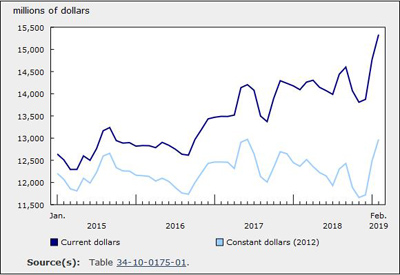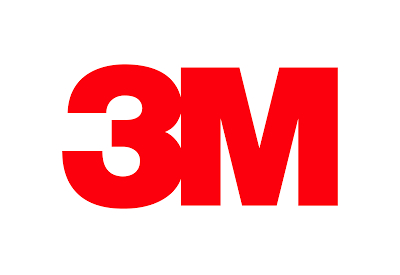4 Technology Disruptions Set to Change Cabling and Connectivity

Mar 1, 2021
By Ron Tellas
Disruptive technology alters the way we operate, driving us to improve processes, operations and systems.
We’re always watching for changes that will impact the industry and bring new possibilities to the way our networks and cabling and connectivity infrastructure are designed and deployed.
We rounded up a short list of four technology disruptions that Belden is monitoring closely and think you should be, too.
1. Single-pair Ethernet
An Ethernet protocol — known as single-pair Ethernet — has been designed to operate over a single pair of UTP/STP cable. Because it uses only two conductors, the cable is lightweight, cost effective and easy to install.
Although wireless devices can support some of the same applications, it’s important to remember that control and sensor devices require power, too. With hundreds or thousands of devices and sensors being deployed in a single facility alone, smaller is sometimes better when managing and routing cables. This makes single-pair Ethernet ideal for small IoT devices and sensors.
Single-pair Ethernet is expected to impact four areas:
• Enterprise IoT — single-pair Ethernet may support the connection of more low-data devices as the industry moves toward smart buildings.
• On-board automotive sensors — connected smart cars require data transmission to park automatically, warn of lane departures and support smartphone apps. Single-pair Ethernet can connect a car’s networking system to on-board microcontroller units to provide these features.
• Industrial automation — sensors and actuators similar to those in automotive applications are used in industrial environments as well. These devices don’t require high data rates but need to connect to the network to detect and report on things like environmental conditions, which can be supported by single-pair Ethernet.
• Up to 20W Power over Direct Line (PoDL) — single-pair Ethernet supports PoDL, which simplifies wiring by eliminating a separate power cable. Single-pair Ethernet makes power supply with data transmission possible.
What this means for your cable infrastructure
Single-pair Ethernet offers a way to bring all your controls, sensors and low-data devices onto an Ethernet network, as well as deliver power.
2. Wi-Fi
Wi-Fi is a critical component in today’s digital infrastructure; it offers untethered device connectivity and supports IoT and smart buildings. Once connected to Wi-Fi, devices can access the internet and communicate with other devices on the same network.
Wi-Fi standards are developed by IEEE and designated by the number “802.11” followed by letters that represent the technology’s generation and maximum speed and range. The Wi-Fi Alliance has taken these standards and marketed them as “Wi-Fi” followed by numbers and letters.
Here’s what we see on the horizon:
• Wi-Fi 6 (802.11ax), which will bring faster, more stable connections in high-density environments. It works in the 2.5 GHz and 5 GHz bands.
• Wi-Fi 6E, which is an extension of Wi-Fi 6 (using IEEE 802.11ax technology). It provides four times the amount of bandwidth offered by Wi-Fi and operates in the newly available 6 GHz band.
• 802.11ah (HaLow), which supports long-range, low-power wireless sensor networks. It works in the 2.4 GHz, 5 GHz and 6 GHz bands.
• 802.11ay, which is a WLAN that supports device connectivity via fixed point-to-point or point-to-multipoint outdoor backhaul technology. It works in the 60 GHz band.
What this means for your cable infrastructure
Behind any wireless network is a high-performance wired network: you’ll need cabling and connectivity specifically designed to support wireless infrastructure.
For example: combining the Category 6A performance you need with the Belden quality and reliability you expect, our REVConnect 10GXW System offers best-in-class noise immunity with 4 dB of PSANEXT and 10 dB of PSAACRF headroom. This level of performance eliminates slow network speeds and maximizes uptime in wireless environments.
3. Small cells
Small cells transmit data to and from wireless devices, providing network coverage and adding targeted capacity indoors or outdoors. They improve wireless coverage by redistributing signals from cellular carriers, bringing them inside or dispersing them across a vast area.
4G LTE AdvancedPro and 5G licensed protocols require increasing numbers of small cells to provide wireless coverage, reduce bottlenecks and utilize Power over Ethernet (PoE).
What this means for your cable infrastructure
If you deploy in-building small cells, these applications require high-bandwidth wireless coverage and PoE.
As installation of access points and small cells increases to improve wireless coverage, the amount of pathway cabling required to support increased network capacity will increase, too.
In addition, small-cell deployments often utilize the millimeter wave spectrum, relying on fibre for the backhaul portion of the network. Fibre is preferred for the fronthaul portion of the network as well (the portion that connects the small cells).
4. Digital electricity
Digital electricity technology does exactly what its name implies: distributes electricity in a digital format, creating packets of energy that transfer from a transmitter to a receiver. If there’s a problem (improper wiring, someone touching transmission lines, etc.), then the transmitter stops sending energy packets. This creates a “touch-safe” electrical transmission, also known as a fault-managed system.
Digital electricity delivers power to applications posing distance limitations that PoE and remote DC powering can’t support. The technology provides power to wireless systems, such as a distributed antenna system (DAS), without needing direct power access nearby. When systems are powered remotely, you can install components in optimal locations instead of worrying about placement in conjunction with a power source.
What this means for your cable infrastructure
For maximum performance, you need a solution tailored to the demands of digital electricity: a cable that safely provides lots of power over long distances.
Belden’s DE cables https://www.belden.com/products/cable/power-cable/digital-electricity-cable – numberOfResults=25 are the only application-specific solution designed to support digital electricity. Designed in conjunction with VoltServer, the creator of Digital Electricity, the cables can transmit up to 2,000W or reach up to 2 km and be installed by power-limited systems integrators.
This article was first published online by Belden; www.belden.com/Blogs/4-Technology-Disruptions-Set-to-Change-Cabling-and-Connectivity
















